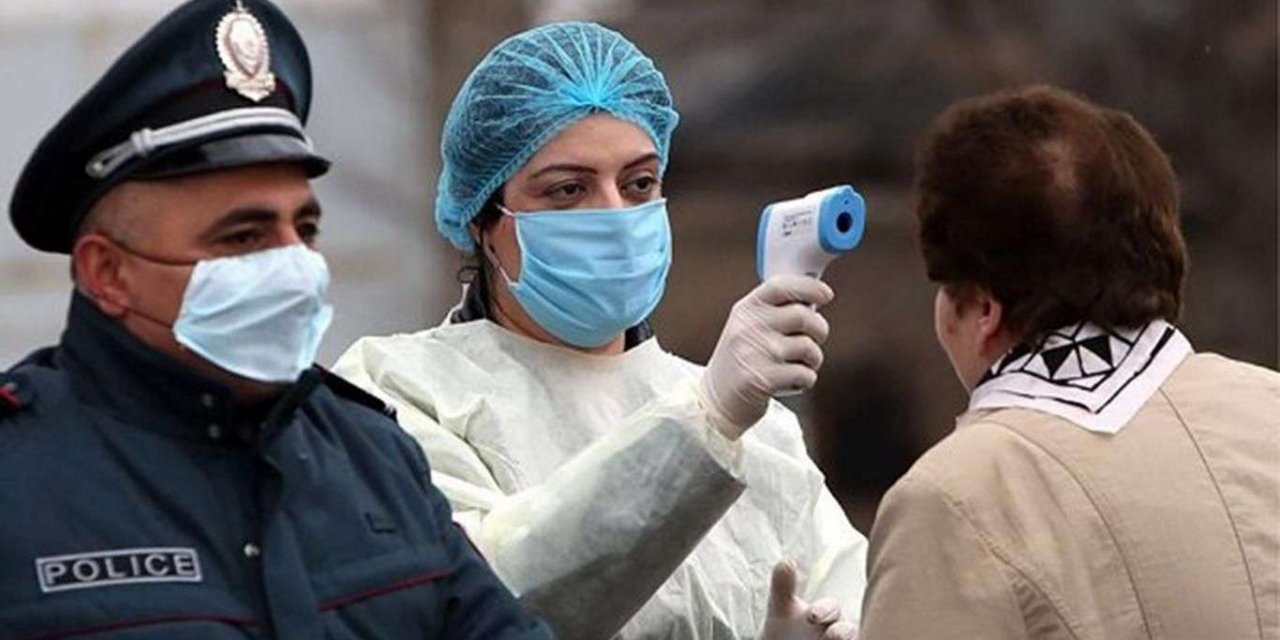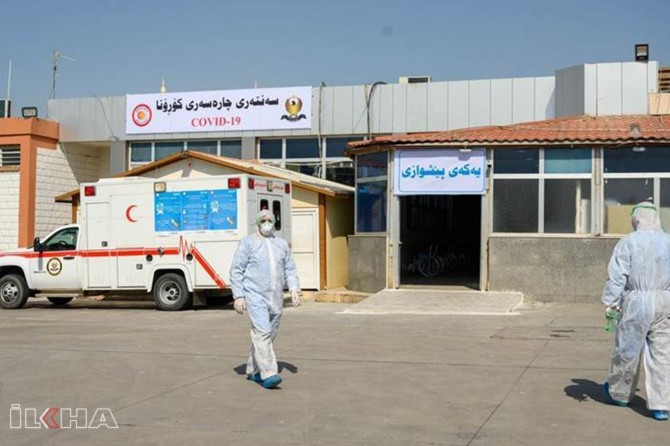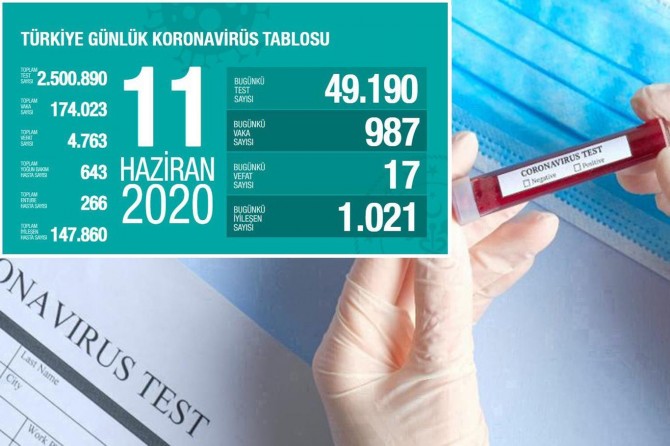
Women in statistics
Turkstat announced women's statistics related to in many issues, from the percentage of the total population to lifetimes, from education levels to employment, from professor ratio to ambassador ratio.
Turkstat announces 2018 statistics for women living in Turkiye.
According to this, 49.8 percent of the population of Turkiye consists of female population, while the expected life expectancy in women was 80.8 years.
In Turkiye, while the male population was 41,139,980 persons, female population was 40,863,902 persons in 2018. In other words, the male population constituted 50.2% of the population and the female population constituted 49.8%.
This proportional balance between females and males changed for the benefit of females in the age group of 65 and older because females live longer than males.
Male population constituted 44.1% and the female population constituted 55.9% of the population at this age group.
Female life expectancy at birth was 80.8 years
According to life tables, 2015-2017 results, life expectancy at birth was 78 years at the total, 75.3 years for males and 80.8 years for females.
In general, females live longer than males and the difference in life expectancy at birth is 5.5 years. The proportion of women completing at least one education level was 83.6%
In 2017, as the proportion of those who were 25 years of age and older and completed at least one education level in the total population was 89.5%; this proportion was 95.5% for males and 83.6% for females in Turkiye.If the gender parity index value, which expresses the relative size of the female students gross schooling rate to the male students gross schooling rate, is equal to 1, then this means there is equality between male and female students.
If it is smaller than one, it shows inequality on behalf of the male. If it is greater than one, then it shows inequality on behalf of the female.When the gender parity index was analyzed by the type of education; the primary education student gender parity index was 1.009 in 2017, the secondary school gender parity index and the higher education gender parity index were 0.933 separately.
When the gender parity index was analyzed by years, it has been seen that the index of higher education gender parity has been constantly improving since 2008 in favor of female students.
The female employment rate was less than half of the male's employment rate
According to the household labor force survey results; in 2017, the employment rate of the population aged 15 and over was 47.1%, while this rate was 65.6% for males and 28.9% for females in Turkiye.
When the labor force participation rate by education status was investigated, it was seen that the higher the education status of females, the more they participated in the labor force.
The labor force participation rate of illiterate females was 15.9%. This rate was 27.7% for females who graduated from school less than high school, 34.3% for females who graduated from high school, 42.6% for females who graduated from vocational high school and 72.7% for females who graduated from higher education.
Employment of females was most in the service sector
According to the household labor force survey results; in 2017, when the employment rate was analyzed by sex and economic activities, in the agricultural sector the total employment rate was 19.4%, while the male employment rate was 15.4% and the female employment rate was 28.3%.
In the industrial sector, the total employment rate was 26.5%, while the male employment rate was 31.4%, and the female employment rate was 15.6%.
In the service sector, the total employment rate was 54.1%, which was 53.2% for male and 56.1% for female.
The proportion of those employed and having care responsibilities was 46.9%
According to the reconciliation between work and family life, 2018 survey results, the proportion of employed people in 18-64 age group having care responsibilities was 46.9%, while this rate was 48.1% for males and 44.2% for females.
On the other hand, 38.7% of those not in the labor force have care responsibilities while this rate was 14.8% for men and 45.9% for women.
The proportion of people who had trouble getting leave in working hours was 9.2%
According to the results of life satisfaction survey, in 2018, the proportion of those who were employed as waged, salaried, casual getting trouble of one or two hours of leave for dealing with personal or family related matters in working hours was 9.2% while this proportion was 8.8% for males and 10.3% for females.
The proportion of female professors in higher education was 31.2%
According to higher education statistics; while the proportion of female professors was 27.4% in the educational year of 2008/'09, it was 31.2% in the educational year of 2017/2018.
The proportion of females who work in associate professor staff was 38.8%, the proportion of females who work in instructor staff was 50.2%.
The proportion of female ambassadors was 22.1%
According to the Ministry of Foreign Affairs data; while the proportion of female ambassadors was 10.8% in 2009, this proportion was 22.1% in 2018.
The proportion of females in a management position was 17.3%
According to the results of the household labor force survey, the proportion of females in an upper and middle-level management position in the companies was 14.4% in 2012 and 17.3% in 2017.
The mean age at first marriage for females was 24.8
According to the results of marriage statistics; the mean age at first marriage for females who officially made their first marriage in 2018 was 24.8, while that of males was 27.8.
The province with the highest mean age at first marriage was Tunceli with 30.8 for males and 27.6 for females. The province with the lowest mean age at first marriage were Şanlıurfa and Afyonkarahisar with 25.9 for males and Ağrı with 21.9 for females.
The highest crude divorce rate was in İzmir with 2.79 per thousand
According to the results of divorce statistics; the crude divorce rate was 1.75 per thousand in 2018. When it was analyzed by provinces, the province with the highest crude divorce rate was İzmir with 2.79 per thousand.
This province was followed by Muğla with 2.77 per thousand and Antalya with 2.69 per thousand.
The province with the lowest crude divorce rate was Hakkari with 0.16 per thousand. This province was followed by Şırnak with 0.28 and Siirt with 0.31 per thousand.
The proportion of women who use the Internet was 64.7%
According to information and communication technology usage survey by households and individuals results; in the period of twelve months including April in 2017 and March in 2018, the proportion of individuals at the age group of 16-74 using the Internet was 71.9%.
This proportion was 79.2% for males and 64.7% for females.
Deaths caused by diseases of the circulatory system took first place
According to causes of death statistics results; among the causes of death cases in 2017, diseases of the circulatory system were in the first place with 39.7%, malign and benign neoplasms were in the second order with 19.6% and diseases of the respiratory system were in the third order with 12%.When the causes of death cases were examined by sex, it was observed that there was no significant difference between male and females.
According to this, the diseases of the circulatory system took first place with 43.7%, the malign and benign neoplasms took second place with 15.1% and the diseases of the respiratory system took third place with 11.2% among the cause of death for females.
Married males and females were happier
According to life satisfaction survey results; the proportion of individuals who declared themselves as happy was 53.4% in 2018. While the level of happiness was 49.6% for males, it was 57% for females.
It was seen that 56.3% of married individuals and 46.7% of non-married individuals were happy. While 51.6% of married males and 60.7% of married females declared that they were happy, 45.5% of non-married males and 47.9% of non-married females declared that they were happy.
ILKHA










Türkçe karakter kullanılmayan ve büyük harflerle yazılmış yorumlar onaylanmamaktadır.